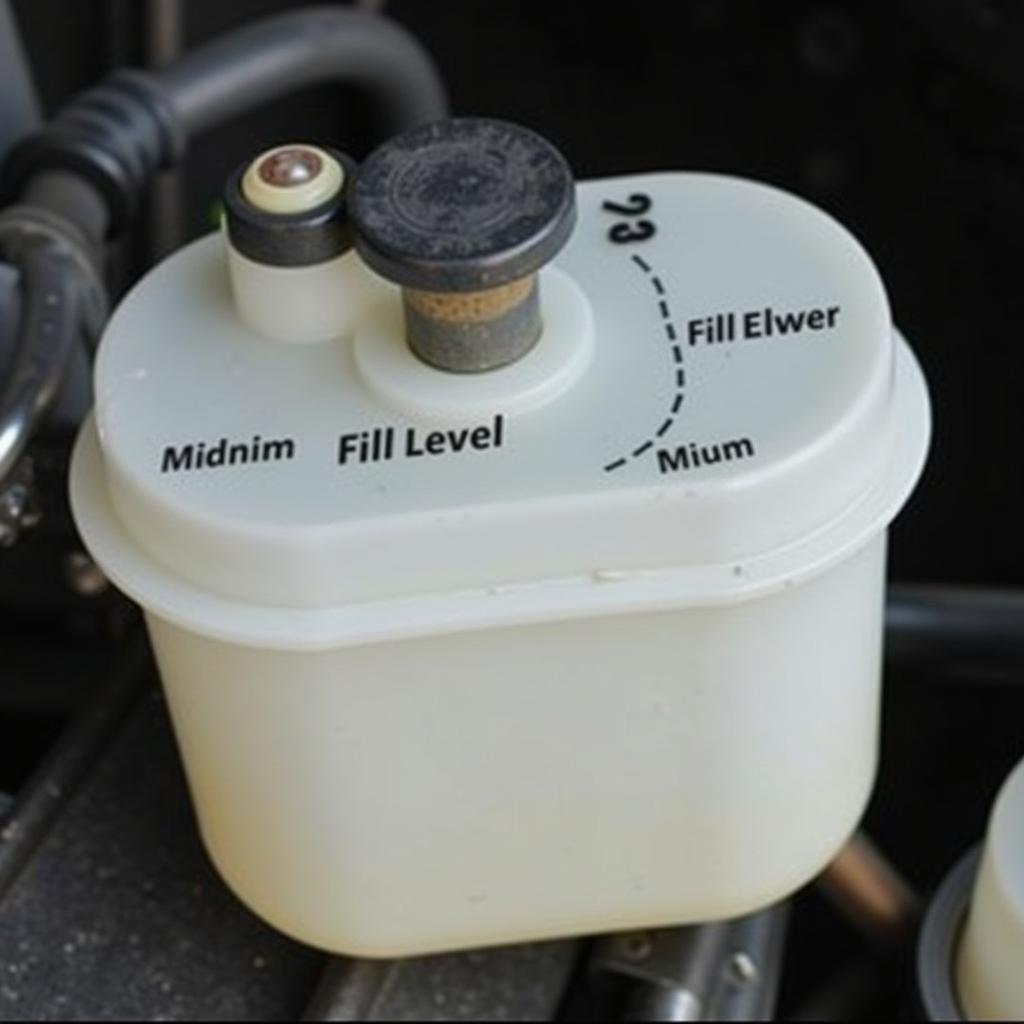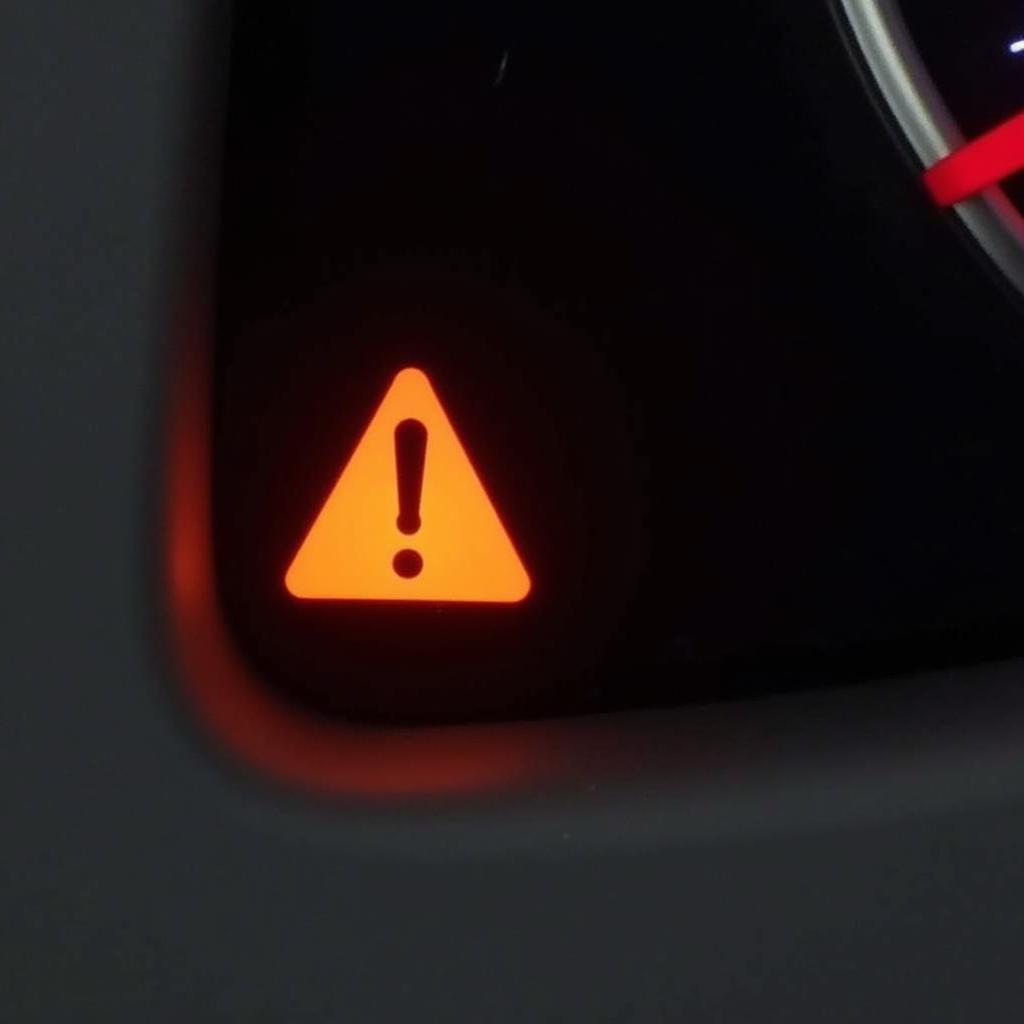So, your 2001 Chevy Cavalier is throwing a curveball your way – the brake warning light is on, but the brakes seem to be working just fine. This scenario is surprisingly common and can stem from a few different culprits. Before you hit the panic button, let’s dive into some possible reasons why this might be happening and, more importantly, how to get to the bottom of it.
Common Causes of a Brake Warning Light with Functional Brakes
While a glowing brake warning light might initially send shivers down your spine, it’s crucial to remember that it doesn’t always signify a catastrophic brake failure. Often, the issue is less about your actual braking power and more about a fault in the system’s monitoring or fluid levels. Here are some usual suspects:
1. Low Brake Fluid Level
This is public enemy number one when it comes to illuminating brake warning lights. Your car’s braking system relies on hydraulic pressure to function correctly. When the brake fluid level drops below a certain point, it can trigger the warning light.
What to do:
- Check the brake fluid reservoir. It’s usually located near the firewall on the driver’s side and has a clearly marked minimum and maximum fill line.
- If the fluid is low, top it off with the correct type of brake fluid specified in your owner’s manual. Be sure to add fluid slowly to avoid overfilling.
 2001 Chevy Cavalier Low Brake Fluid Reservoir
2001 Chevy Cavalier Low Brake Fluid Reservoir
Important Note: If you find yourself frequently adding brake fluid, it could indicate a leak in the system, which requires immediate professional attention.
2. Faulty Brake Fluid Level Sensor
Even if your brake fluid level is perfect, a malfunctioning sensor can send a false signal, causing the warning light to illuminate. This sensor is typically located inside the brake fluid reservoir.
What to do:
While visually inspecting the sensor is a good start, determining if it’s faulty often requires diagnostic tools and expertise. It’s best to consult a qualified mechanic in this case.
3. Worn Brake Pads
Believe it or not, even with worn brake pads, your car can still stop effectively, at least for a while. Most modern vehicles have wear sensors in the brake pads that trigger the warning light as they reach the end of their lifespan.
What to do:
- Listen for any unusual noises when braking, such as squealing or grinding, which can indicate worn pads.
- Have a mechanic inspect your brake pads to determine if they need replacement.
 Worn Brake Pads on a 2001 Chevy Cavalier
Worn Brake Pads on a 2001 Chevy Cavalier
4. Issues with the ABS System
Your 2001 Chevy Cavalier is equipped with an Anti-lock Braking System (ABS). If the ABS module detects a problem, it can illuminate the brake warning light. This could be due to a faulty wheel speed sensor, a problem with the ABS module itself, or a wiring issue.
What to do:
Diagnosing ABS problems often requires specialized scanners. If you suspect an issue with your ABS system, it’s best to consult with a qualified mechanic or an automotive electrician specializing in ABS diagnostics.
Remote Diagnostics and Programming: A Modern Solution
In today’s technologically advanced world, remote diagnostics and programming are emerging as powerful tools for troubleshooting car issues, including brake system problems. By connecting your vehicle to a specialized computer remotely, experienced technicians can analyze your car’s data, pinpoint the root cause of the problem, and even reprogram certain modules if necessary.
Quote from John Smith, Senior Automotive Electrician at XYZ Auto:
“Remote diagnostics allows us to provide faster and more efficient service to our customers. Instead of relying solely on visual inspections, we can access the car’s internal computer system to get a much clearer picture of what’s going on.”
This technology can be particularly helpful when dealing with complex electronic systems like the ABS.
Don’t Ignore the Warning Signs
While it’s normal to feel a sense of relief when your brakes seem to be working despite a lit warning light, it’s crucial not to ignore it. The brake warning light is your car’s way of telling you something isn’t quite right. Addressing the issue promptly ensures your safety and can prevent potentially more costly repairs down the line.
Remember, if you’re unsure about what’s causing the warning light or uncomfortable tackling any of the checks yourself, always consult a qualified mechanic.

